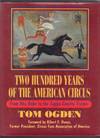

Stock Photo: Cover May Be Different
The Los Alamos Primer: The First Lectures On How To Build An Atomic Bomb
by Serber, Robert, and Rhodes, Richard (Editor)
- Used
- Very Good
- Hardcover
- first
- Condition
- Very Good/Very good
- ISBN 10
- 0520075765
- ISBN 13
- 9780520075764
- Seller
-
Silver Spring, Maryland, United States
Payment Methods Accepted
About This Item
Berkeley: University of California Press, 1992. First Printing [Stated]. Hardcover. Very good/Very good. xxxiii, [1], 98, [4] pages. Footnotes. Illustrations. Formulae. Endnotes. Appendix I: The Frisch-Peierls Memorandum. Appendix II: Biographical Notes. Index. Robert Serber (March 14, 1909 - June 1, 1997) was an American physicist who participated in the Manhattan Project. Serber's lectures explaining the basic principles and goals of the project were printed and supplied to all incoming scientific staff, and became known as The Los Alamos Primer. The New York Times called him "the intellectual midwife at the birth of the atomic bomb." He was recruited for the Manhattan Project in 1941, and was in Project Alberta on the dropping of the bomb. When the Los Alamos National Laboratory was first organized, Oppenheimer decided not to compartmentalize the technical information among different departments. This increased the effectiveness of the technical workers in problem solving, and emphasized the urgency of the project in their minds, now they knew what they were working on. So it fell to Serber to give a series of lectures explaining the basic principles and goals of the project. The primer was declassified in 1965. Serber developed the first good theory of bomb assembly hydrodynamics. Serber's wife was appointed by Oppenheimer to head the technical library at Los Alamos, where she was the only wartime female section leader. Serber was with the first American team to enter Hiroshima and Nagasaki to assess the results of the atomic bombing of the two cities. In 1951, he became a professor of physics at Columbia University at the behest of Manhattan Project colleague I. I. Rabi. The classified lectures that galvanized the Manhattan Project scientists, with annotations for the nonspecialist reader and an introduction by a Pulitzer Prize-winning historian. In March 1943 a group of young scientists, sequestered on a mesa near Santa Fe, attended a crash course in the new atomic physics. The lecturer was Robert Serber, J. Robert Oppenheimer's protégé, and they learned that their job was to invent the world's first atomic bomb. Serber's lecture notes, nicknamed the "Los Alamos Primer," were mimeographed and passed from hand to hand, remaining classified for many years. They are published here for the first time, and now contemporary readers can see just how much was known and how terrifyingly much was unknown when the Manhattan Project began. Could this "gadget," based on the newly discovered principles of nuclear fission, really be designed and built? Could it be small enough and light enough for an airplane to carry? If it could be built, could it be controlled? Working with Richard Rhodes, Pulitzer Prize-winning historian of the development of the atomic bomb, Professor Serber has annotated original lecture notes with explanations of the physics terms for the nonspecialist. His preface, an informal memoir, vividly conveys the mingled excitement, uncertainty, and intensity felt by the Manhattan Project scientists. Rhodes's introduction provides a brief history of the development of atomic physics up to the day that Serber stood before his blackboard at Los Alamos. In this edition, The Los Alamos Primer finally emerges from the archives to give a new understanding of the very beginning of nuclear weapons. No seminar anywhere has had greater historical consequences.
Reviews
(Log in or Create an Account first!)
Details
- Bookseller
- Ground Zero Books
(US)
- Bookseller's Inventory #
- 87637
- Title
- The Los Alamos Primer: The First Lectures On How To Build An Atomic Bomb
- Author
- Serber, Robert, and Rhodes, Richard (Editor)
- Format/Binding
- Hardcover
- Book Condition
- Used - Very Good
- Jacket Condition
- Very good
- Quantity Available
- 1
- Edition
- First Printing [Stated]
- ISBN 10
- 0520075765
- ISBN 13
- 9780520075764
- Publisher
- University of California Press
- Place of Publication
- Berkeley
- Date Published
- 1992
- Keywords
- Atom Bomb, Manhattan Project, Nuclear Physics, Atomic Physics, Chain Reaction, Critical Mass, Fission, Gun Assembly, Plutonium, Tamper, Uranium, Implosion, Radiation
Terms of Sale
Ground Zero Books
Books are offered subject to prior sale. Satisfaction guaranteed. If you notify us within 7 days that you are not satisfied with your purchase, we will refund your purchase price when you return the item in the condition in which it was sold.
About the Seller
Ground Zero Books
Biblio member since 2005
Silver Spring, Maryland
About Ground Zero Books
Founded and operated by trained historians, Ground Zero Books, Ltd., has for over 30 years served scholars, collectors, universities, and all who are interested in military and political history.
Much of our diverse stock is not yet listed on line. If you can't locate the book or other item that you want, please contact us. We may well have it in stock. We welcome your want lists, and encourage you to send them to us.
Much of our diverse stock is not yet listed on line. If you can't locate the book or other item that you want, please contact us. We may well have it in stock. We welcome your want lists, and encourage you to send them to us.
Glossary
Some terminology that may be used in this description includes:
- New
- A new book is a book previously not circulated to a buyer. Although a new book is typically free of any faults or defects, "new"...

